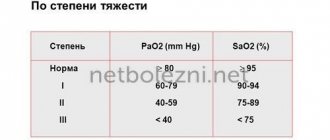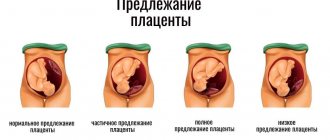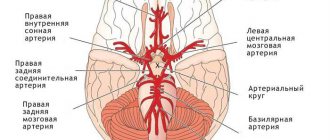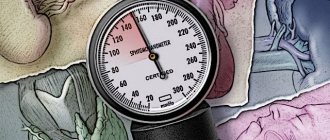Adrenal insufficiency (hypocorticism) - symptoms and treatment
Adrenal insufficiency , or hypocortisolism , is a severe endocrine disease in which the body lacks adrenal hormones [1][7]. It develops gradually over many months or even years, worsens health, disguises itself as chronic fatigue syndrome and other serious illnesses, which makes its diagnosis much more difficult.
The adrenal glands are endocrine glands. Their internal (brain) part produces the hormone adrenaline, which mobilizes all the body's defenses. The outer part of the adrenal glands - the cortex - produces corticosteroids:
- cortisol - regulates energy reserves in the body (glucose, proteins, fats), helps a person fight stress and infections, gives strength and energy;
- aldosterone - controls that the body has as much water, potassium and sodium as necessary for the proper functioning of the heart, kidneys and other organs, maintains normal blood pressure;
- androgens - affect sexual development, libido, metabolism, mood, memory, thinking (the ability to concentrate and maintain attention, achieve goals, a tendency to conflicts and irritation), determine the structure of the body, muscle strength and bone density.
According to the level of damage, primary insufficiency is distinguished (Addison's disease), in which the functioning of the adrenal gland itself is disrupted, as well as secondary and tertiary, in which the control of the adrenal glands through the pituitary gland and hypothalamus is disrupted [1][2][8].
Causes of primary adrenal insufficiency:
1. Impaired development of the adrenal glands:
- congenital adrenal hypoplasia (underdevelopment) is a rare hereditary pathology that occurs in boys; manifested by primary adrenal insufficiency and secondary hypogonadism - a disorder of sexual development;
- ACTH resistance syndrome - receptor immunity to the effects of ACTH; manifests itself in at least three diseases: familial glucocorticoid deficiency types 1 and 2, as well as Allgrove syndrome [2].
2. Destruction of the adrenal glands (destruction):
- autoimmune destruction of the adrenal cortex - accounts for 85% of all cases of destruction; often combined with damage to other endocrine glands and non-endocrine organs (autoimmune polyglandular syndromes);
- bacterial, viral and fungal infections - tuberculosis, blastomycosis, histoplasmosis, meningococcal infection, HIV infection, syphilis, sepsis;
- hemorrhages in the adrenal glands;
- damage to the adrenal glands by metastases - more common in bronchial and breast cancer;
- complication after removal of the adrenal glands due to Itsenko-Cushing disease and other diseases, as well as when using various drugs: anticoagulants, blockers of steroidogenesis in the adrenal glands (aminoglutethimide, cloditan, ketoconazole), barbiturates, spironolactone[1][2][8][11 ];
- amyloidosis is a disease in which amyloid (a complex protein-polysaccharide complex) is deposited in tissues; leads to atrophy, sclerosis and failure of various organs, including the adrenal glands;
- hemochromatosis is a genetic disease accompanied by a disorder of iron metabolism, which accumulates in excess in the liver, heart, pancreas and pituitary gland;
- adrenoleukodystrophy is a rare genetic disease that occurs due to a mutation in the ALD gene; leads to adrenal insufficiency, hypogonadism (disorder of sexual development) and progressive demyelination of the white matter of the brain and spinal cord [2].
3. Disorders of steroidogenesis (formation of steroids):
- violation of cholesterol biosynthesis - Smith-Lemli-Opitz syndrome;
- congenital disorder of the adrenal cortex;
- mitochondrial diseases [2].
Causes of secondary and tertiary adrenal insufficiency:
1. Congenital secondary hypocortisolism.
2. Destruction of the hypothalamic-pituitary structures:
- tumors of the pituitary gland and hypothalamus - craniopharyngiomas, germinomas, etc.;
- traumatic brain injury;
- infiltrative granulomatous processes in the pituitary gland (syphilis, sarcoidosis) or infectious lesions;
- surgery, such as removal of a pituitary tumor;
- irradiation of the head (pituitary gland and hypothalamus);
- vascular diseases - carotid artery aneurysm, hemorrhage into the pituitary gland.
3. Complication due to long-term treatment of various diseases with the use of glucocorticoids and their abrupt withdrawal [1][2][8].
Hypocorticism can develop at any age . Every year, primary deficiency is detected in approximately 4 cases per 100 thousand population [12].
The most common cause of acute adrenal insufficiency in newborns is hemorrhage into the adrenal glands due to hypoxia or sepsis. With impaired development of the adrenal glands, all forms of impaired steroidogenesis and pseudoaldosteronism, symptoms of the disease appear soon after birth. They are associated with loss of salt, i.e., with a lack of mineralocorticoids. In this case, newborns experience uncontrollable “fountain” vomiting, children rapidly lose weight, and they develop dehydration, which can lead to vascular collapse—a sharp drop in blood pressure [2].
During the neonatal period and at a young age, the first place among the causes of hypocortisolism is occupied by various forms of congenital dysfunction of the adrenal cortex in children of both sexes and congenital adrenal hypoplasia in boys. In older children , as in adults, the most common causes are autoimmune polyglandular syndrome and adrenoleukodystrophy. With age , the proportion of autoimmune, infectious and metastatic lesions of the adrenal glands increases [2].
In older children, the main trigger for adrenal insufficiency is destruction of the adrenal glands. Symptoms appear with significant destruction of glandular tissue (only after the destruction of more than 90% of all cells) and practically do not differ from the manifestations of the disease in adults [1][2].
Signs of chronic adrenal insufficiency
The clinical manifestation of chronic adrenal insufficiency occurs only when most of the glandular tissue of the adrenal glands is destroyed. The main signs of the disease are general weakness and muscle weakness. At the beginning of the pathological process, these signs usually appear only during physiological stress (physical and emotional overload, trauma). Over time, weakness becomes more pronounced towards the end of the day, but after a full night's rest it goes away. As the disease progresses, the feeling of weakness becomes constant and acquires the character of adynamia. From the neuropsychic side, asthenia is observed, accompanied by irritability, lethargy, and decreased libido.
Patients experience weight loss, which is explained by decreased appetite, nausea, vomiting, decreased absorption activity of the intestine, and abnormal bowel movements. A number of patients complain of a constant need for salty foods.
Due to disturbances in the water-salt balance, already in the early stages of the disease one of the main signs of chronic adrenal insufficiency is revealed - a decrease in blood pressure, which can lead to dizziness and fainting.
For primary adrenal insufficiency, a characteristic sign is increased pigmentation of the skin and mucous membranes, which at the beginning of the pathological process is perceived by patients as a long-term preservation of the tan after insolation. The color of the skin can vary from smoky, bronze to very dark, and the color of the mucous membranes can vary from blue-black. At first, areas of the skin that are not protected from the sun (face, neck, hands) and have more pronounced pigmentation normally (armpits, scrotum, nipple areola, perineum) acquire a darker color. Later, pigmentation becomes more widespread and affects areas of the skin in contact with clothing. In patients with autoimmune primary chronic renal failure, small and large non-pigmented light spots of irregular shape can be found against the background of areas with excess pigmentation - vitiligo.
Secondary hypocortisolism is characterized by nonspecific symptoms - general weakness and hypoglycemic attacks, which develop a couple of hours after eating. Hyperpigmentation, disorders of the digestive tract and cardiovascular system are not noted.
Diagnostic criteria for chronic adrenal insufficiency
Since clinical manifestations at the onset of the disease are always vague and nonspecific, when collecting anamnesis, it is important to focus on the time of onset of fatigue, muscle weakness, loss of appetite, weight loss, hyperpigmentation and other signs, as well as the speed of their development and their combination with other signs of adrenal insufficiency.
When examined, patients reveal areas of brown or bronze darkening, especially pronounced in places where clothing rubs, on hems and scars, on the lines of the palms, on the mucous membranes of the oral cavity, in the area of the nipples and external genitalia. In some patients, areas of depigmentation can be detected, which will be evidence of an autoimmune process. Dark freckles are often found on the face of patients.
When measuring the patient's body weight, a decrease is noted. Blood pressure ranges from 90/60 - 100/70 mm Hg. Art., and in patients with concomitant arterial hypertension it is close to normal - 120/80 mm Hg. Art. or moderately increased.
A state of weakness, accompanied by a feeling of hunger and increased sweating, characteristic of hypoglycemia, is observed in patients both on an empty stomach and a couple of hours after eating. In addition, dysfunction of the central nervous system is detected in the form of decreased memory, attention, depression and irritability.
Due to the reduced level of androgens, female patients experience a complete absence or presence of sparse hair in the axillary and pubic areas.
The main diagnostic criterion for chronic adrenal insufficiency is to determine the level of cortisol and aldosterone in the blood. In primary chronic adrenal insufficiency, along with a decrease in the concentration of these hormones, there is also an increase in the level of adrenocorticotropic hormone and renin in the blood plasma.
When performing a blood sugar test, a low level is detected. The concentration of potassium salts in the blood is increased, and the concentration of sodium compounds is decreased.
To make a diagnosis when the clinical picture is blurred, a stimulation test with adrenocorticotropic hormone is used. If, after additional external administration of corticotropin or syncorpin, the level of adrenocorticotropic hormone does not exceed the basal level several times, we can judge that the capabilities of the adrenal cortex have decreased.
The difficulty in making an early diagnosis of chronic adrenal insufficiency arises from the fact that signs of the disease are very often found in other pathologies. Therefore, the disease should be differentiated from neurocirculatory dystonia, which is characterized by general and muscle weakness, but they are leveled out under the influence of psycho-emotional factors, as well as from gastric ulcers, tumor processes, anorexia nervosa, which are characterized by a combination of weight loss with arterial hypotension. In addition to chronic adrenal insufficiency, dark spots on the skin are also observed with pellagra, liver cirrhosis, melanoma, and poisoning with heavy metal salts.









